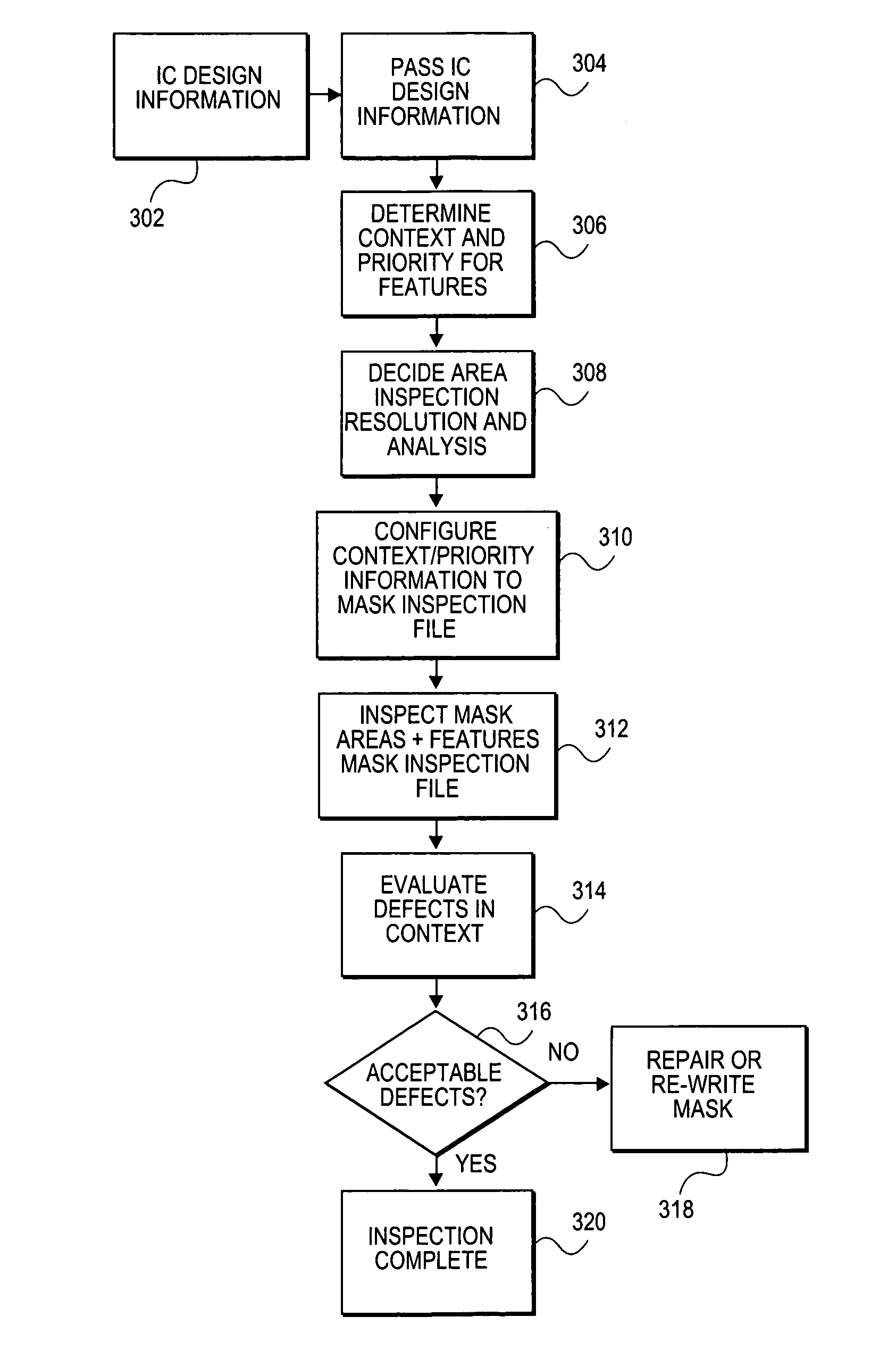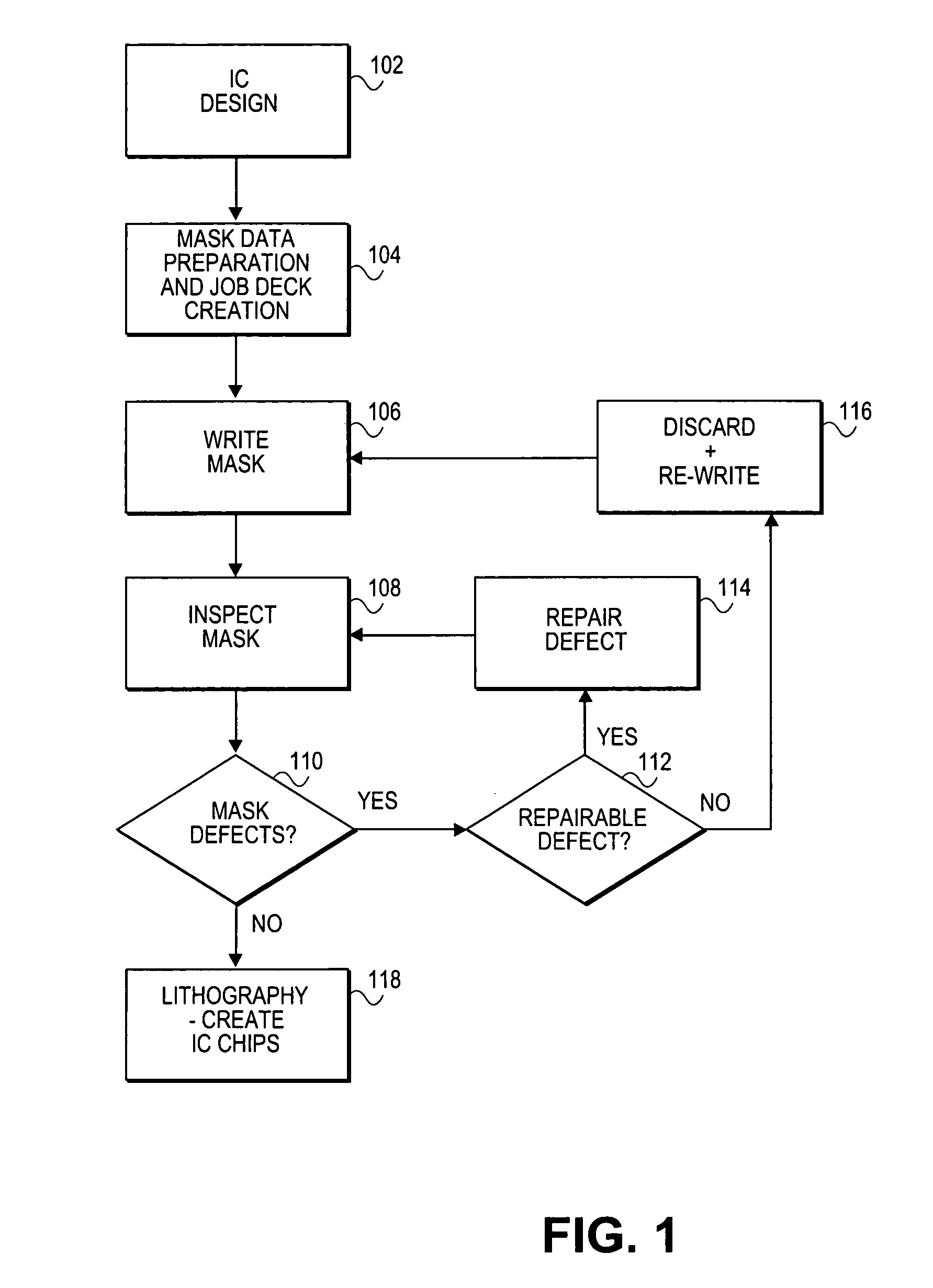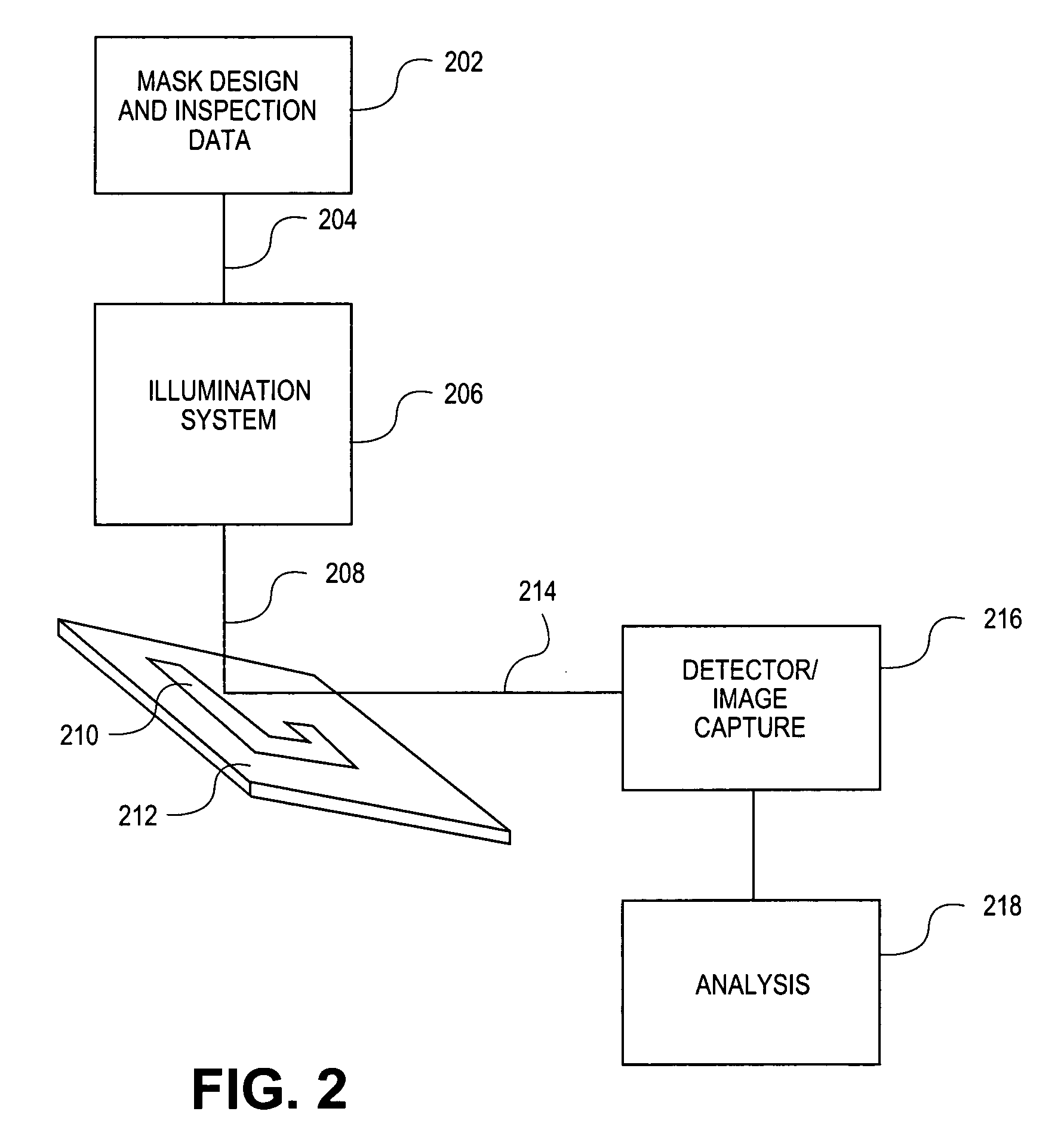Method and system for context-specific mask inspection
a mask and context-specific technology, applied in the field of masks, can solve the problems of extreme precision for sub wavelengths, the resolution limit of optical lithography technology is increasingly being challenged, and the overall polygonal figure count is skyrocketing
- Summary
- Abstract
- Description
- Claims
- Application Information
AI Technical Summary
Problems solved by technology
Method used
Image
Examples
Embodiment Construction
[0031]A method and system is provided for improving mask inspection processes. In an embodiment, the information developed in designing an integrated circuit and photomask are used to give context to polygonal shapes that are inspected on a mask. Polygonal shapes of various circuit elements are inspected in light of their associated contextual information, such as priority, ordering, or inspection parameter information, for example. The contextual information may be added to a database and emphasized for use in guiding the mask inspection process. The contextual information may also include both manufacturing and circuit context parameters, and be used in processes that prioritize and order various features of the circuit or mask designs.
[0032]Contextual information related to the manufacturing process may include, for example: specified resolution; criticality; proximity-effect distortions; topological properties of a circuit layer resulting from mask features; chemical or thermal ...
PUM
 Login to View More
Login to View More Abstract
Description
Claims
Application Information
 Login to View More
Login to View More - R&D
- Intellectual Property
- Life Sciences
- Materials
- Tech Scout
- Unparalleled Data Quality
- Higher Quality Content
- 60% Fewer Hallucinations
Browse by: Latest US Patents, China's latest patents, Technical Efficacy Thesaurus, Application Domain, Technology Topic, Popular Technical Reports.
© 2025 PatSnap. All rights reserved.Legal|Privacy policy|Modern Slavery Act Transparency Statement|Sitemap|About US| Contact US: help@patsnap.com



